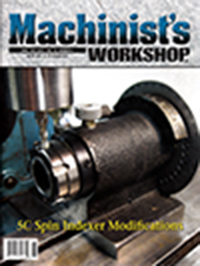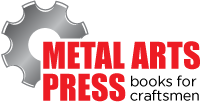
Machinists Workshop
Publication:I wasn't successful the first time I made an attempt at welding, mainly due to the fact that I was simply handed the equipment and told to see what I could do. Although learning is best done by putting your hands to work, having something like Welding Know-How at my disposal certainly would have helped.
As is true with most projects, it's best to know both what to do and the reasons for it being done in a specific way. Also, understanding how all aspects of the welding process work together will help you achieve the best results. Having this kind of knowledge base not only helps you work processes confidently, it gives you the ability to troubleshoot problems and come up with the best solutions. This is the kind of knowledge that Welding Know-How offers.
The information in this book contains more than just techniques for welding. You'll also find discussions on brazing, cutting, and soldering. The metallurgy section provides a good overview of heat-treatment and its importance in your projects. The book also instructs how to make special-purpose tools, make improvements to your
old tools, and how to build welding fixtures. Included are a total of more than 500 line drawings to help illustrate the various procedures and techniques discussed.
Whether you're looking to pick up some shop tricks or just starting out, the information in this book will be both practical and useful. As the author, Frank Marlow, states, "I guarantee that it has no high falutin' philosophy or history that no one cares about." His goal is to offer practical information that will help you in real life situations.
As you read through this book, you will undoubtedly spend more time in some chapters than others. One of my favorite chapters is Chapter 12, titled "Common
Problems and Solutions." It is the collection of techniques, methods, and procedures that, when applied, make any welding job go smoothly. Instead of trying
to figure it out on your own, why not learn from someone else's mistakes?
Another great chapter is Chapter 14, "Fabrication Tips." Things like mounting table legs, burr removal, making hangers, vehicle frame repair, and adding right angle bends to steel pipes are all detailed. Although some of the examples may not apply to the project in front of you, it will only be a matter of time before you realize the basic knowledge offered can be applied to many different areas.
Chapter 2, titled "Safety," is another chapter worth noting. With anything you might make or repair in your shop, the most important thing is that you do it safely. Just being an amateur can be a dangerous obstacle to overcome, but sometimes even the experienced can suffer from a brief lapse of concentration that leads to an unfortunate outcome. Chapter 2 is a good reminder of the most important thing in
your shop for you!
As you work your way through Welding Know-How, you'll start by learning the basic
terminology, equipment, and reasons for welding, and end up learning how to apply tips and techniques that have been developed by master welders. Who knows? Maybe you will be able to join the ranks of master welders as well!
